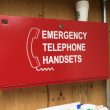Ride and seek
In real estate, the industry mantra states that the most important factors in determining the value of property are “location, location, location.” This axiom also is familiar to public safety, as accurately determining the location of an incident is one of the first steps to enabling an effective response.
With an accurate incident location, the correct number and type of emergency-response resources can be dispatched to a site quickly — this is a typical scenario when a 911 caller uses a traditional fixed telephone line to place an emergency call. It is in these situations that the 911 system shines because it is designed to handle such calls. As a result, databases provide public-safety answering points, or PSAPs, with an accurate, automatic location for the emergency caller.
But the proliferation of cell phones in the United States has made fixed telephony calls to PSAPs more the exception than the rule. A few years ago, the majority of 911 calls began coming from cellular callers; today, many PSAPs field 70% or more of their emergency calls from the cellular system.
For public-safety agencies, the problem is that getting an accurate location of a 911 caller using a cellular phone is much more difficult than with fixed telephony. Public-safety officials often have expressed frustration with the location information from cellular calls because inaccuracies can result in valuable time being lost trying to search for an incident. In addition, more resources often have to be deployed to an area in hopes that one of them will find the incident.
“Responders are told what kind of call it is,” said Roger Hixson, technical issues director for the National Emergency Number Association (NENA). “If it’s wireless, it certainly makes a difference, in many cases.”
In early 2007, the Association of Public-Safety Communications Officials released the results of its Project LOCATE study, which revealed seven PSAPs in the U.S. that received wireless location data with accuracy results far below the thresholds set by the FCC.
However, none of the wireless carriers actually had violated the FCC’s rules, which at the time allowed them to average 911 calls from large regional areas. The commission passed rules last fall calling for carriers to meet the accuracy thresholds within each given PSAP territory. Those rules were overturned by a federal court on procedural grounds, but the court also suggested that substantive issues might exist. That led key wireless and public-safety players to agree that location accuracy should be measured on a county level.
Ted Morgan, CEO of Skyhook Wireless, a provider of location-based services, said county-level testing would be a big improvement over the previous rules, which allowed carriers to comply with the FCC’s location accuracy mandate because excellent location accuracy in some areas offset poor location accuracy in other areas.
“Everyone was kind of playing the game a little bit to find areas that made it look like they were meeting these requirements, when the reality is that, when you drove in the middle of Manhattan, you couldn’t get a fix,” Morgan said. “Instead, they were in upstate New York testing it. Now, by going down to the county level, it forces you to do some testing in Manhattan and in downtown San Francisco — and that’s where all the people are, not out in some field somewhere.”
Morgan’s scenario actually would apply only to GPS location systems, which traditionally have been used by CDMA carriers such as Verizon Wireless and Sprint. GPS works best when a satellite has a clear path to the caller, so it tends to work well in remote areas, but it is not as effective in urban settings.
Meanwhile, network-based location solutions — traditionally used by GSM carriers such as AT&T Wireless and T-Mobile — tend to provide better accuracy in more-urban areas but are less effective in remote areas, where the scarcity of tower sites makes triangulation difficult.
In recent filings with the FCC, AT&T Wireless has indicated that it would maintain its network-based location system and add GPS capability, which should allow the carrier to provide better location information regardless of the environment, said Brian Fontes, who became NENA’s CEO after representing AT&T on regulatory matters before the FCC for several years.
“As a former AT&T person, that surprised me because it’s very expensive to run a network-based solution,” Fontes said about AT&T maintaining dual location systems. “I don’t know what provoked them to do that, but I think it’s a good thing.”
Hixson said such hybrid solutions have gained favor at the FCC in recent years. Indeed, in approving its rules a year ago, the FCC mentioned hybrid solutions as something it would consider. But economic realities mean that adding another location solution to the mix is not a priority for carriers, Morgan said.
“[Carriers’] focus around location has gone more to the revenue side. E911 is all about cost — you can’t make any money off of emergency phone calls,” Morgan said. “What they’ve noticed is they can make a fair amount of money by providing navigation services, friend finders and location apps in general.
“That’s really where all the innovation is happening at the carrier level … and a byproduct of that will be a better E911 system. But E911 is no longer the driving factor.”
Indeed, location-based services are some of the hottest applications in the wireless industry, with navigation services commonly found on many high-end phones and other applications based on the user’s location being introduced regularly.
While many of these solutions utilize the network-based and GPS location solutions used for wireless E911, an increasing number leverage new location technologies. For example, Morgan’s Skyhook Wireless uses signals from Wi-Fi access points to provide location information that is accurate within 20 to 50 meters throughout a metropolitan area for devices such as the iPhone.
“The big challenge to positioning is the indoor and urban area problem,” Morgan said. “That’s a big advantage to us at Skyhook because those are the places where we do best — where there’s a higher density of Wi-Fi signals, we get better accuracy. All these Wi-Fi signals are coming from inside buildings, so the indoor coverage is fantastic, and the urban accuracy is amazing.”
Other companies offering new technologies include Polaris Wireless, which uses software to determine an “RF signature” for various locations to identify a caller’s location. In addition, Rosum has developed a location solution that combines television and GPS signals to deliver reliable location and timing information in indoor and urban areas.
While Rosum offers a handset solution, it has not been used in any handset to date, said John Metzler, Rosum’s director of business development. However, the company’s solution has been integrated into femtocells, with a public relationship existing with 2Wire and “progress” being made with other femtocell manufacturers, he said.
“Obviously, if you can locate a home femtocell, you know that the wireless handset has to be within 20 meters of that box, which is far more accurate than is being required of carriers using a handset-based solution,” Metzler said.
Mobile wireless consultant Andrew Seybold said he believes these new technologies can be used to help augment carriers’ existing location systems for E911.
“There are some issues with in-building, and some of these technologies can be used in buildings and in cities as an adjunct,” Seybold said. “There is no 100% positive, complete solution to this.”
While combining new technologies with existing location solutions is theoretically possible, “wireless carriers have typically seemed reluctant to change what they already are doing,” Hixson said. Indeed, Fontes and Morgan noted that a cultural change within large carriers needs to occur before new technologies are integrated into 911 location services.
“Right now, inside an operator, those are two completely different groups — E911 is in a completely different building from the location-based services group,” Morgan said. “As those two get to know each other, they’ll realize that — between them — they have the right technology.”
While the most stringent FCC rules require carriers only to be accurate within 50 meters, Hixson said public safety would benefit from much more accurate location information.
“I’ve heard people say that wireless needs to be accurate within 4 inches,” Hixson said. “Why? Because that’s the width of a wall in an apartment.”
But Hixson acknowledged that even that type of accuracy would provide only a limited benefit to first responders in dense urban environments with multistory buildings. In those situations, even pinpoint accuracy of a caller’s longitude/latitude leaves response teams to determine whether the incident is occurring on the 10th floor or the 30th floor of a building.
Hixson said he believes altitude coordinates are at least three to 10 years away from being included in 911 location systems. Morgan said getting that information is only half the battle.
“If I told you the person is 45 feet in the air, how would you know what floor they’re on? There are no maps of floors and insides of buildings to [let you] say, ‘Oh, they’re on the third floor in suite 305,’” he said. “So even if you had the altitude, there’s not much a responder could do with it until you have all the buildings mapped.”
In the meantime, public safety will continue to strive for better latitude and longitude data to make emergency responses as efficient as possible. Fontes said he questions whether the county-level measuring proposals will enhance first responders’ ability to do this.
“It’s not the world’s best solution, but is it palatable and will it sustain legal challenge?” Fontes said. “Yes, it’s palatable, and hopefully it will sustain legal challenge. And then we’ll move on.”
| Solution type | Close range | Long range |
|---|---|---|
| Handset-based (GPS) | 50 meters for 67% of calls |
150 meters for 95% of calls |
| Network-based (triangulation) | 100 meters for 67% of calls |
300 meters for 95% of calls |
| Source: FCC | ||

















